#history of kolkata
Text
the way victorie and robin and ramy all loose their birth languages has me in shambles. victorie never really spoke hatian creole, she moved to france at a very young age, and when she tried to bring it into babel, she was dismissed. ramy, who’s from kolkata, who’s bengali, only speaks bengali once in the book and his speech has become rudimentary because the british saw urdu and sanskrit and arabic as more valuable. robin has forgotten cantonese by the time he goes back home for the same reason. it’s utterly tragic it comes with a deep pain that’s hard to describe the pain of loosing your mother tongue.
#kolkata is how it’s spelled now btw. idk if ppl know that#babel#babel an arcane history#rf kuang#robin swift
2K notes
·
View notes
Text
A walk through Bengal's architecture
Bengali architecture has a long and rich history, fusing indigenous elements from the Indian subcontinent with influences from other areas of the world. Present-day Bengal architecture includes the nation of Bangladesh as well as the Indian states of West Bengal, Tripura, and Assam's Barak Valley. West Bengal’s architecture is an amalgamation of ancient urban architecture, religious architecture, rural vernacular architecture, colonial townhouses and country houses, and modern urban styles. Bengal architecture is the architecture of Wind, Water, and Clay. The Pala Empire (750–1120), which was founded in Bengal and was the final Buddhist imperial force on the Indian subcontinent, saw the apex of ancient Bengali architecture. The majority of donations went to Buddhist stupas, temples, and viharas. Southeast Asian and Tibetan architecture was influenced by Pala architecture. The Grand Vihara of Somapura, which is now a UNESCO World Heritage Site, was the most well-known structure erected by the Pala rulers.

The Grand Vihara of Somapura
According to historians, the builders of Angkor Wat in Cambodia may have taken inspiration from Somapura. Bengal architecture became known for its use of terracotta due to the scarcity of stone in the area. Clay from the Bengal Delta was used to make bricks.
The temple architecture has distinct features like the rich wall decoration, often known as the terracotta temples, which was one of the remarkable elements of Bengali temple architecture. The double-roofed architecture of thatched huts was replicated by Bengali temples. Square platforms were used to construct the temples. Burnt brick panels with figures in geometric patterns or substantial sculptural compositions served as the temples' adornment.

Dochala style
These served as models for many temples that were built in undivided Bengal. Construction materials used in ancient times included wood and bamboo. Bengal has alluvial soil, so there isn't a lot of stone there. The bricks that were utilized to build the architectural components were made from stone, wood, black salt, and granite. Bengal has two different types of temples: the Rekha type, which is smooth or ridged curvilinear, and the Bhadra form, which has horizontal tiers that gradually get smaller and is made up of the amalaka sila. Mughal architecture, including forts, havelis, gardens, caravanserais, hammams, and fountains, spread throughout the area during the Mughal era in Bengal. Mosques built by the Mughals in Bengal also took on a distinctive regional look. The two major centers of Mughal architecture were Dhaka and Murshidabad. The do-chala roof custom from North India was imitated by the Mughals.

Jorasako thakurbari
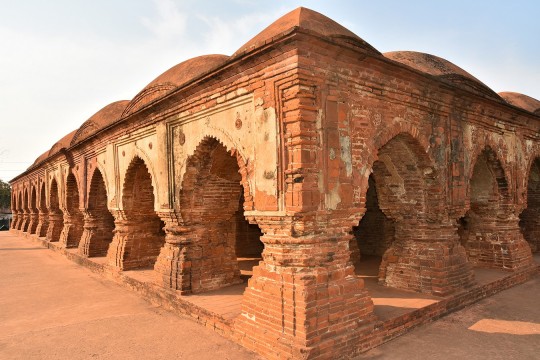
The Rasmancha is a heritage building located at Bishnupur, Bankura district, West Bengal.
Influence of the world on Bengal architecture: Although the Indo-Saracenic architectural style predominated in the area, Neo-Classical buildings from Europe were also present, particularly in or close to trading centers. While the majority of country estates had a stately country house, Calcutta, Dacca, Panam, and Chittagong all had extensive 19th and early 20th-century urban architecture that was equivalent to that of London, Sydney, or other British Empire towns. Calcutta experienced the onset of art deco in the 1930s. Indo-Saracenic architecture can be seen in Ahsan Manzil and Curzon Hall in Dhaka, Chittagong Court Building in Chittagong, and Hazarduari Palace in Murshidabad.
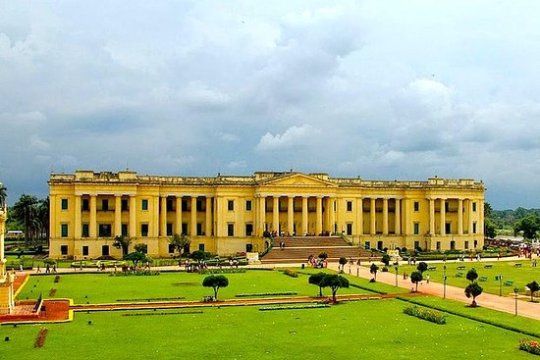
Hazarduari Palace in Murshidabad
The Victoria Memorial in Kolkata, designed by Vincent Esch also has Indo-Saracenic features, possibly inspired by the Taj Mahal. Additionally, Kolkata's bungalows, which are being demolished to make way for high-rise structures, have elements of art deco. The 1950s in Chittagong saw a continuation of Art Deco influences. The Bengali modernist movement, spearheaded by Muzharul Islam, was centered in East Pakistan. In the 1960s, many well-known international architects, such as Louis Kahn, Richard Neutra, Stanley Tigerman, Paul Rudolph, Robert Boughey, and Konstantinos Doxiadis, worked in the area.

The Jatiyo Sangshad Bhaban
This iconic piece of contemporary Bangladeshi architecture, was created by Louis Kahn. Midsized skyscrapers dominate the cityscapes of contemporary Bengali cities, which are frequently referred to as "concrete jungles." With well-known architects like Rafiq Azam, architecture services play a key role in the urban economies of the area. Overall Bengal architecture was influenced by various contemporaries of their time and continues to evolve.

Gothic architectural style seen in St. Paul's Cathedral in Kolkata.

Zamindar era buildings in ruin.

Belur Math in Howrah
#bengali#bangla#west bengal#bangladesh#tripura#assam#desi#বাংলা#india#architecture#tales#bengal architecture#history#kolkata#international#technology#information#temple#asia#bricks
174 notes
·
View notes
Text
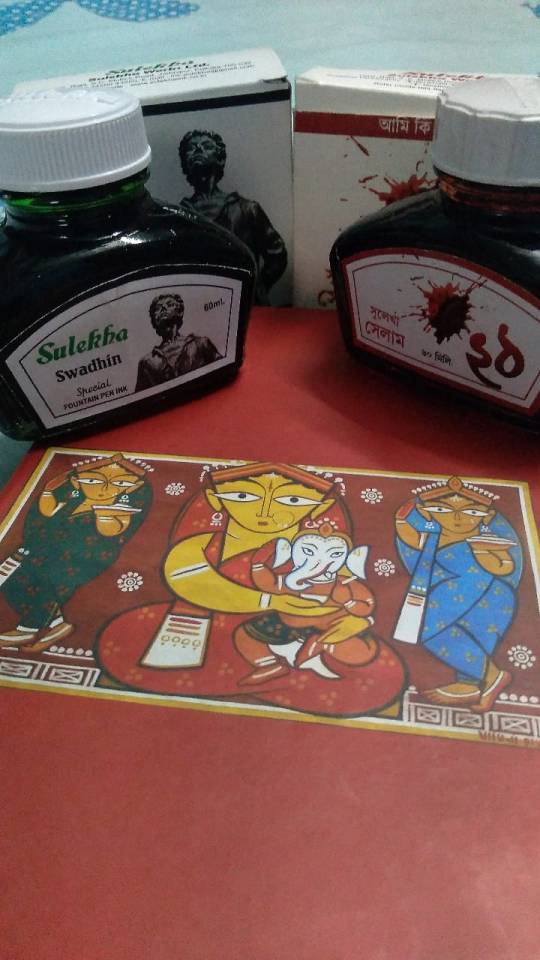
এক ফালি ইতিহাস
A Slice of History
So my father went to the Kolkata International Bookfair or any Bangali's favourite Boimela. He saw a stall of Sulekha inks...The Sulekha inks and of course he had to explore.
Let me share with you a brief history of Sulekha....
Around 1932 Satish Das Gupta, an ex-chemist of Bengal Chemicals prepares Swadeshi ink, names it Krishnadhara and sells it through Khadi outlets. He then hands the recipe over to Maitra brothers Shankaracharya and Nani Gopal and asked them to make the ink commercially and call it Sulekha ( there is also a story which claims Kobiguru Rabindranath Thakur gave them the name সুলেখা or Sulekha ). After years of an illustrious journey they closed around 1990 and then reopened in 2006.
So my father purchased three things. Two inks and a notebook.
The first ink is a blood red ink called সেলাম ( Selaam or Salaam ). It was made as a gift to Bangladesh commemorating The Language Movement ( ভাষা আন্দোলন ). At first 21 bottles were gifted as a tribute to 21st February. And the creator of the ink mixed in a drop of his blood in the first 21 bottles. Then the ink became popular and was manufactured more. It is a beautiful red colour...and every drop of this ink holds in it the memories of every drop of blood shed for my beloved Bangla Bhasha.
The second ink is a vibrant green. Coloured just like the green of India's Tiranga. This ink was formulated on the day after India's Independence. It is called Swadhin or স্বাধীন.
The third is a notebook made in collaboration with jamini Ray's family. And I absolutely love that notebook.
#history#indian history#spilled ink#miru writes#kolkata#bengblr#desiblr#india#bangladesh#bangla tag#bangla#language#inks#international language day#bhasha dibosh
96 notes
·
View notes
Text
Me: Hey bro! Meet my GF
Friend:

Also friend:

#pinterest#history#travel#urban#kolkata#naruto#itachi uchiha#kakashi hatake#jujutsu kaisen#food#meme#dailyprompt#bleach#one piece
5 notes
·
View notes
Text
On This Day In History
August 16, 1946: Direct Action Day, or the 1946 Calcutta Killings. Large-scale violence between Muslims and Hindus in Kolkata, British India. More than 4,000 died and 100,000 were left homeless.
This, and other religious riots like it, were a major reason for the later Partition of India in 1947.
#History#world history#20th century#indian history#religious history#tw violence#tw religion#muslim#hindu#calcutta#kolkata
48 notes
·
View notes
Text
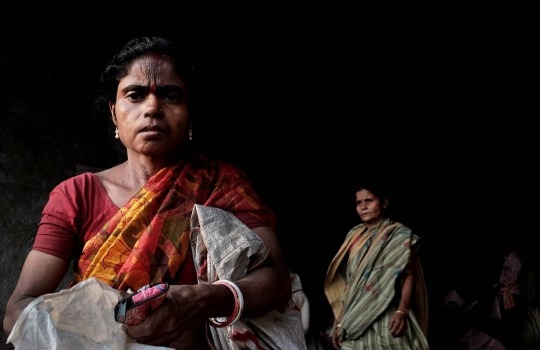

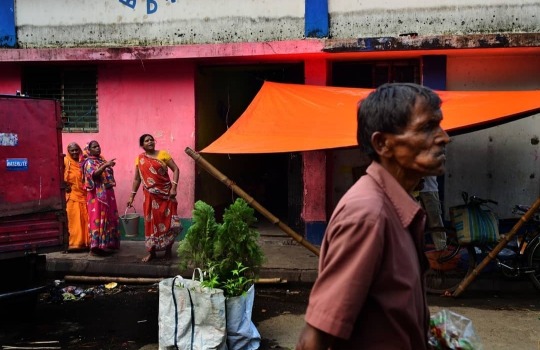

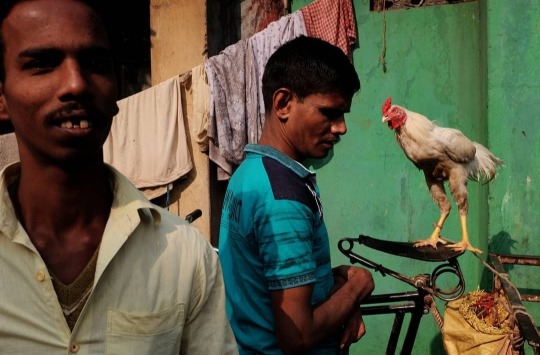

Galiff Street, Kolkata photographed by Arka Bhattacharjee
Galiff Street is the one of the oldest and largest weekly pet markets in India. In the 18th century the last Nawab of Bengal, Siraj-ud-daula had designated a certain area for elephant stables. Gradually, this area attracted elephant and other animal merchants and eventually a market was formed where animals were bought and sold. This place came to be known as Hatibagan (hati in Bengali means elephant while bagan means garden). By the mid twentieth century, the area had attracted merchants and buyers of all kinds and the decision was made to shift the pet market to a less constricted area, and hence the pet market relocated to Galiff Street and Hatibagan continued to be a general market. Galiff Street pet merchants claim that presently the market, directly and indirectly, supports almost 2.5 lakh people.
#arka bhattacharjee#ph#ots#galiff street#kolkata#calcutta#bangla tag#india#desi tag#desi tumblr#desiblr#indian history#peoplehood#street photography#indian street photography#urban history#south asia#tw animal cruelty
43 notes
·
View notes
Text

✨ Ignite Your Creativity with Rabindranath Tagore at NPS Kudlu! 🏫💡
www.npskudlu.com
#tagore#rabindranath#rabindranathtagore#philosophy#kolkata#bengali#bengal#india#19thcentury#janaganamana#nationalanthem#westbengal#history#indianhistory#news#spirituality#schools#school#kids#children#classroom#teachers#Parents#family#mom#dad#bangalore#nps#npskudlu#nationalpublicschool
2 notes
·
View notes
Text
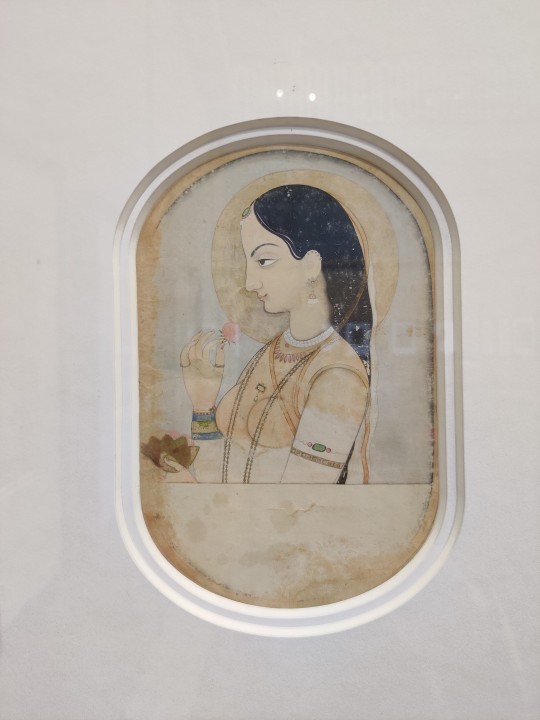
Radha, Gouache on paper, Guler, Pahari painting, 18th century, National museum, Kolkata.
5 notes
·
View notes
Text
Top 7 Most Expensive Over In IPL History Yash Dayal In Unwanted List After Rinku Singh 5 Constructive Sixes
हाइलाइट्स
यश दयाल के एक ओवर में रिंकू सिंह ने लगातार 5 छक्के जड़े.
रिंकू सिंह के 5 छक्कों के साथ यश दयाल ने ओवर में 31 रन लुटाए.
नई दिल्ली. गुजरात टाइटंस के तेज गेंदबाज यश दयाल ने हाल ही में कोलकाता नाइटराइडर्स के खिलाफ खेले गए गए मैच के अंतिम ओवर में 31 रन लुटा दिए. यश दयाल के इस ओवर में कोलकाता नाइट राइडर्स के बैटर रिंकू सिंह ने पांच छक्के जड़े. यश दयाल के ओवर में इस तरह 31 रन आए और वह आईपीएल…

View On WordPress
#Daniel Sams#dwayne bravo#Gt vs kkr#Gujarat Titans#harshal patel#ipl 2023#IPL Records#IPL Unwanted Record#kolkata knight riders#Most Expensive Over In IPL History#Most Expensive Over In IPL History plyaers list#Parwinder Awana#Prasanth Parameshwaran#Rahul Sharma#Ravi Bopara#rinku singh#Rinku Singh 5 Constructive Sixes#sam curran#Top 10 Expensive Over In IPL History#Top 7 Most Expensive Over In IPL History#yash dayal#Yash dayal 1 0ver 31 runs#Yash Dayal In Unwanted List of IPL History
3 notes
·
View notes
Photo
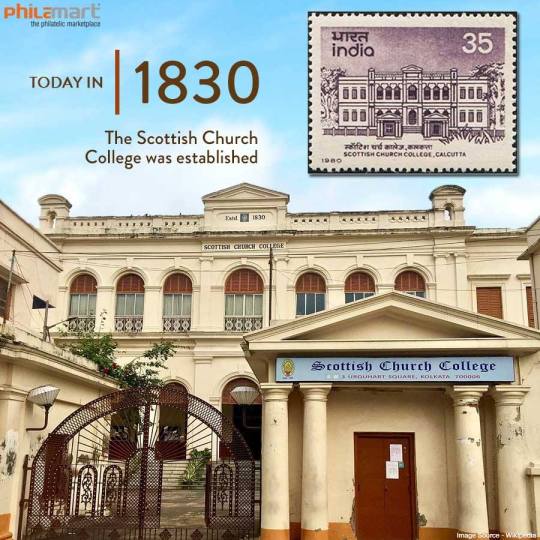

July 13th 1830 The General Assembly’s Institution, now the Scottish Church College was founded in Kolkata (Calcutta)
The college was started by popular the Indian religious and social reformer, Raja Ram Mohan Roy and Scottish missionary Alexander Duff, the first overseas missionary of the Church of Scotland, to India.
The school had a humble beginning with only five students. In the early 19th century, under the East India Company, English education was prone to suspicion, even though the East India Company supported native languages like Persian, Sanskrit and also helped set up institutions like the Calcutta Madrasah College and the Sanskrit College. Overall, colonial administrators displayed a lack of interest in spreading knowledge in the English language, or in providing opportunities for education and better opportunities to the natives. This is where missionaries like Duff stepped in.
Unlike other missionaries Duff was not there to try and convert the students to christianity. Duff wanted to introduce his students to the best of European religion, science and literature. He was also very selective in hiring teachers for his new institute and made sure he had the right amalgamation of European and Indian teachers who would do justice to both Christian and secular understanding, it was also one of the earliest institutes to promote women’s education and was co-ed from the beginning.
It surprises that a college founded in colonial days has, not only survived, but thrived through almost two centuries. It is one of the best Liberal Arts and Science Colleges In India. It has consistently featured among the Top 30 colleges in India and Top 5 in Eastern India, just last month they were awarded an A grade during the National Assessment and Accreditation Council (NAAC) visit for the third time
6 notes
·
View notes
Text
#Kolkata Knight Riders#Sunrisers Hyderabad#IPL final#2024 IPL#Mitchell Starc#MA Chidambaram Stadium#Chennai#IPL title#Kolkata vs Hyderabad#IPL champions#cricket news#Indian Premier League#IPL history#cricket victory#Rahmanullah Gurbaz#Venkatesh Iyer#Sunil Narine#Shreyas Iyer#Shah Rukh Khan#Gautam Gambhir#Pat Cummins#Andre Russell#Vaibhav Arora#Aiden Markram#Heinrich Klaasen#IPL playoffs#cricket celebration#IPL records#cricket tournament#T20 cricket
0 notes
Text

#artists#apugharami#artist#kolkata#art#pencilsketch#apugharamiphoto#apu gharami art#apu gharami#apukolkata#apugharamipicture#apu gharami drawing#apulife#apuart#apu#ap us history
0 notes
Text
Unlikely Sister Cities and How They're Connected Pt.1
I was on a Wikipedia binge recently, every time you see an article about a city you can see a list of its sister cities and they seem to be random but upon closer inspection they are somehow linked.
Kolkata has many sister cities but one that stuck out to me was Thessaloniki in Greece. I've previously written about Greco-Indian connections but this one is much more recent.
There was a rather substantial research paper by Dimitrios Vassiliadis regarding the connection.
Why would there be a Greek diaspora in Kolkata of all place? Well we'll have to pay a visit to 1774 during the Turkish-Russo War. The death and destruction during the war destroyed the properties of many Greek merchants and families in Adrianoupolis and Philippoupolis (modern day Bulgaria). Kolkata at the time was a huge port city and a key hub for the British in Europe. So establishing a post there isn't far fetched for a merchant, especially those looking to expand in brand new territory.
Many immigrants from Greece arrived in Kolkata on the same boats as the British colonists as they made stops along the Ionian Sea on their way to the new colony.
Panagiotes Argyres was seen as the leader of the Greek Mercantile community in Bengal and thusly received the honor of being involved in the creation of the first Orthodox church in the area. The story behind the church was that Panagiotes was onboard a ship to Kolkata. It was caught in a terrible storm and during this time Panagiotes mentioned "If we ever reach Kolkata, I will build a church" but tragically he died in Dhaka before ever making it himself, he did have government support and support from the Greek community to build this church however. If it is any consolation his name was inscribed within the church.
During the Greek Revolution against Ottoman rule. They gathered in that very same church and vowed in 1802 that
" We shall place in custody in Calcutta our spare money and gold and silver and other property for the resurgence of the race of the Greeks. No one will ever put a hand on them. They will be bestowed to the kingdom of the Greeks so that with the grace of God it will be resurrected"
A priest, Father Constantinos collaborated with the Greek embassy in Delhi and managed to compile 50 thousand documents from Greek community all over the country. These documents were supposed to be shipped to Athens but they ended up getting lost on the way tragically. Father Constantions managed to write whatever he remembered in an Athenian journal called "Nea Estia"
He wrote many more books such as "The Greeks of Pontos in India" which contained his memoirs and some biographies of notable Greeks who lived Bengal.
It is quite clear that the Greeks and Bengalis had a very symbiotic relationship and that the roots of Greek culture are highly embedded within the city. Not only Kolkata but other cities within Bengal such as Darjeeling and Dhaka (where they have a monument in the University of Dhaka).
Kolkata and Greece are HEAVILY intertwined with hundreds of families if not more living in Kolkata alone. There's so much more to write but this is a great starting point.
This post wouldn't be possible without the research paper written by Mr Dimitrios Vassiliadis in the Hellenistic Society for Asian Studies. So please do go through it here
1 note
·
View note
Text

Traces of Yesteryears
1 note
·
View note
Text

You can get this car only if you solve it properly:
B___S(Fill in the blanks); and stop simping over girls, simp over your dreams!
#billionarelifestyle#elon musk#newspapers#words#workout#artists on tublr#history#pinterest#dailyprompt#kolkata#drawing#illustration#digital art#my art
1 note
·
View note
Text
The Fascinating History of Howrah Bridge in Kolkata, Calcutta, India
The Fascinating History of Howrah Bridge in Kolkata, Calcutta, India
The Fascinating History of Howrah Bridge in Kolkata, Calcutta, India
Kolkata, formerly known as Calcutta, is a city steeped in history and rich heritage. The iconic Howrah Bridge, also known as Rabindra Setu, is a symbol of Kolkata and holds immense historical and cultural significance. Its construction and impact have shaped…

View On WordPress
0 notes